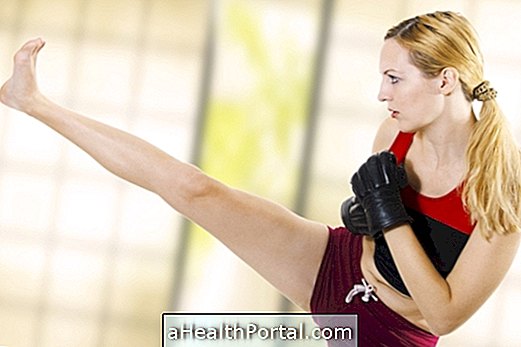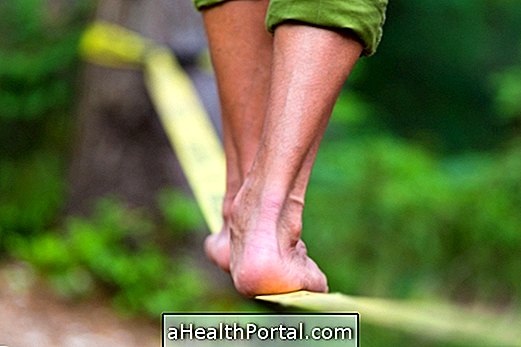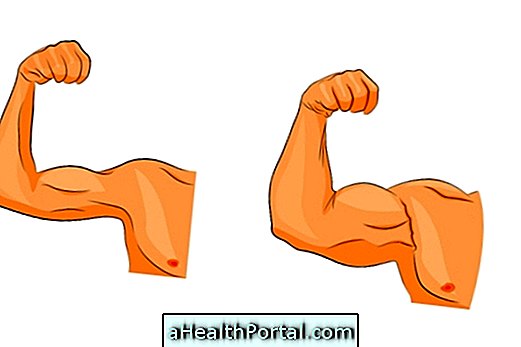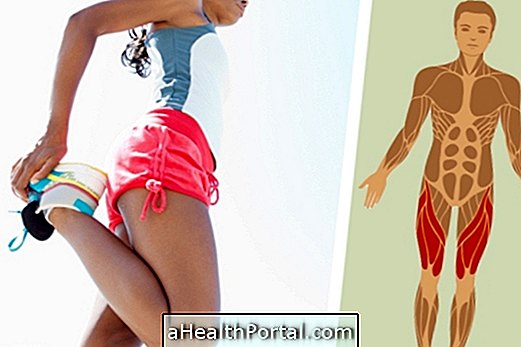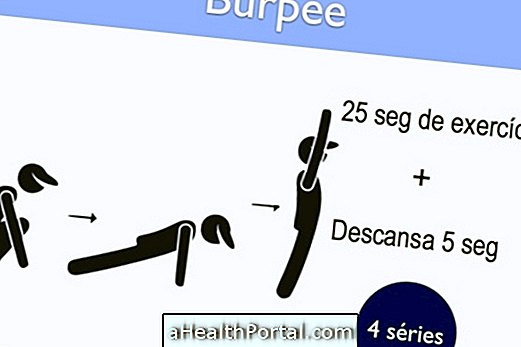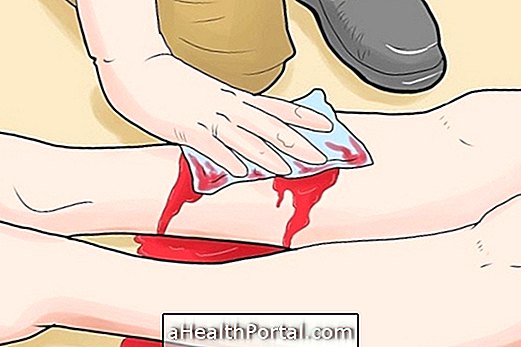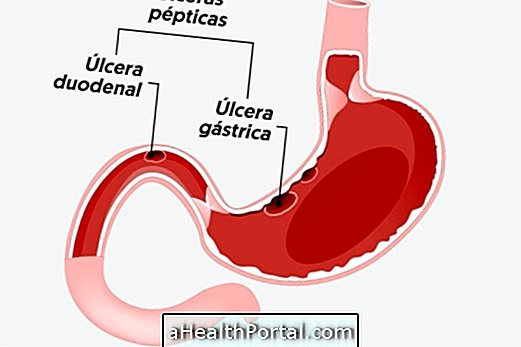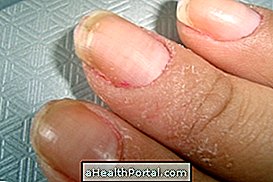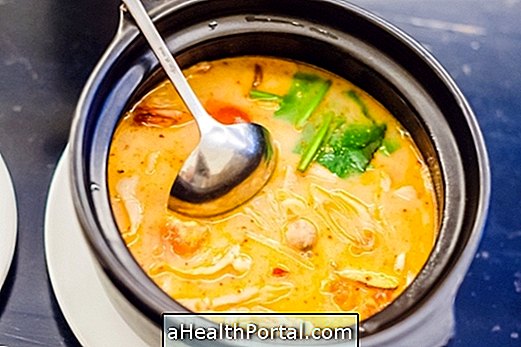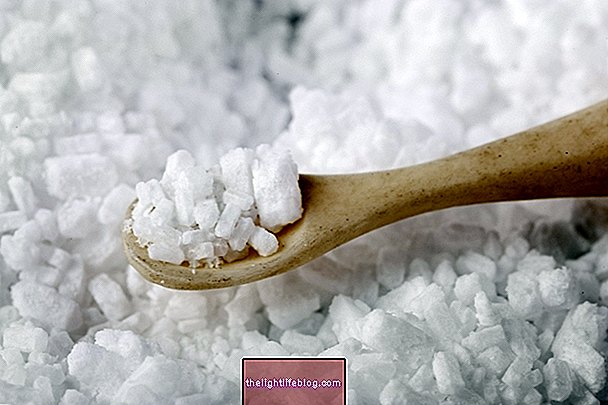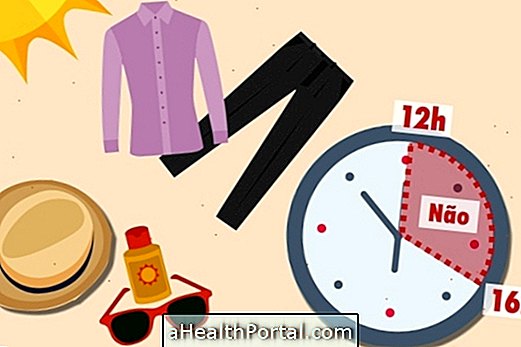The training of glutes to do at home is simple, easy and allows you to work the middle, maximum and minimum glutes, in addition to the calf, thigh and anterior and posterior part of the leg, through exercises that can be done with or without the use of weights.
These exercises help to improve muscle strength, fight cellulite and leave the butt firmer and less flabby. In addition, the glutes are part of the core, which is a group of muscles responsible for the support and stability of the body, improving posture and support of the hips.
To do the exercises for the glutes, it is important to take into account the physical conditions and limitations of the body to avoid any type of injury such as back pain or gluteal tendonitis. Thus, it is always recommended to have a medical evaluation and have guidance from a physical educator.
How to do glute training at home
The glute training at home can be done 1 to 3 times a week, in 2 to 5 sets of 10 to 20 repetitions, depending on the exercise. The ideal is to choose from 4 to 6 exercises per workout.
It is important, before starting training, to warm up to improve muscle performance, activate circulation and prevent injuries. A good warm-up option is to stand and lift one leg, bent at a 90 degree angle to your hips, alternating your legs as if you were marching in the same place for 5 minutes. Another option is to go up and down stairs for 5 minutes, for example.
Some exercise options for doing a glute workout at home are:
1. Bridge

To start the glute training, a good exercise is the bridge, as it helps to stabilize the core by working the glutes, the back and the abdomen, in addition to being another form of muscle warm-up.
How to do it: lie on your back with your arms in line with your body, bend your knees and support your feet on the floor with your heels in line with your knee. Contract your abdomen and buttocks and raise your hips off the floor until your body forms a straight line from your knees to your head. Hold this position for 5 to 10 seconds and lower your hips. You can do 2 to 3 sets of 8 to 10 repetitions each.
Weighted option: the bridge does not require weights, but you can use a gym ball under your feet to increase the difficulty of the exercise and work your balance.
2. Leg elevation bridge

The leg elevation bridge helps to strengthen the glutes, abdomen and lower back, in addition to improving the stability of the hips.
How to do it: lie on your back with your arms in line with your body, bend your knees and support your feet on the floor with your heels in line with your knee. Contract your abdomen and buttocks and raise your hips off the floor until your body forms a straight line from your knees to your head. Lift one leg, without letting your hips fall to the floor between repetitions. Return the leg to the starting position and repeat the movements with the other leg. You can do 2 to 3 sets of 15 to 20 repetitions each.
Weighted option: you can use a shin pad on each leg to intensify the exercise.
3. Elevation from foot to ceiling

The elevation of the foot to the ceiling is a good option for the glutes, as it works with strength and resistance. In addition, it helps to strengthen the abdomen and legs.
How to do it: stand on all fours, with your knees hip-width apart and arms straight at your shoulders. Lift one foot towards the ceiling, keeping the knee bent. Care must be taken not to arch the back, which should always be straight. Return the leg to the starting position. Repeat this movement 15 to 20 times for each leg for 4 to 5 sets. One option to make exercise difficult is to make short movements, keeping the leg always on top, without returning to the starting position.
Weighted option: you can use shin guards, one on each leg, to intensify muscle work.
4. Lateral leg elevation

The lateral leg elevation works the resistance and the strengthening of the glutes, besides strengthening the legs and the abdomen.
How to do it: support your hands and knees on the floor keeping your back straight and with your abdomen contracted. Lift one leg to the side to the hip, taking care not to bend the spine. Repeat this movement 15 to 20 times for each leg for 4 to 5 sets.
Weighted option: you can use shin guards, one on each leg, to intensify training and muscle work.
5. Classic squat

The squat is a complete exercise that works the glutes, thighs, calf, back of the legs and abdomen.
How to do it: standing, spread your feet, in line with the width of your shoulders. The back should always be straight and the abdomen contracted. Slowly descend by flexing your knees, tilting your torso slightly forward and pushing your butt far back, as if you were going to sit in an invisible chair. Descend until the knees are at a 90-degree angle and do not extend beyond the tip of the feet. Return to the starting position. Do 3 sets of 20 repetitions with 1 minute rest between sets.
Weighted option: you can use as a dumbbell or a kettle ball and, if you don't have them, you can put one or more 1 kg packages of rice or beans in a backpack, for example. Take the weight with both arms in front of your body and do the movement of the squat down with your arms aligned to the body.
6. Bulgarian squat

The Bulgarian squat is one of the most efficient workouts to work the glutes and thighs, improving muscle strengthening and stretching, as well as improving the flexibility of the body.
This exercise has the advantage of providing less lumbar overload, as one leg is worked at a time.
How to do it: on your back, support one leg on a chair or a bench, keeping the other foot on the floor. Flex the knee of the leg that is resting on the floor, going down as if you were crouching down to form a 90 degree angle. Return to the starting position. It is important to keep your spine straight and your feet and hips aligned. Do 3 sets of 10 repetitions with each leg, resting 1 minute between each set.
Weighted option: you can use a dumbbell in each hand to do the squats or use a pet bottle filled with water or sand or a 1 kg package of rice or beans, for example.
Check out other ways to do squats to strengthen your glutes and how to do them.
7. Side squat

The side squat is another option to strengthen the glutes and thighs, in addition to working the inside of the legs.
How to do it: stand up, with your feet hip-width apart. Step sideways with one leg while pushing your hips back. It is important to keep your knee pointing forward towards your toes. Extend the other leg with your foot always on the floor. Lift the bent leg, returning to the starting position. Repeat the movement 15 to 20 times for 2 to 3 sets for each leg.
Weighted option: you can use a dumbbell as a weight and, if you don't have it, you can put one or more 1 kg packages of rice or beans in a backpack, for example. Take the weight with both arms in front of your body and do the movement of the squat down with your arms aligned to the body. Another good option to intensify muscle work and work balance is to use a half ball.
What to do after training
After glute training, stretching should be done to help relax the muscles, tone the muscles and prevent injuries.
The stretches for the glutes should include the middle, maximum and minimum glutes. To do these stretches, weights are not necessary.
1. Hug your legs

The embrace of the legs should be done lying down, allowing to stretch the middle, minimum and maximum gluteal muscles, in addition to the hips, legs and lower back.
How to do it: lie on the floor with your belly up and bend your legs, holding them with your hands for 20 to 30 seconds. Repeat the movement 3 times. Another option is to hug one leg at a time, keeping the other leg straight, if possible.
2. Twist your back

This stretching, allows you to stretch the gluteus maximus, in addition to helping to improve the flexibility of the hips and should be done sitting.
How to do it: sit on the floor with your legs straight and your back slightly tilted back against your arms. Cross your left foot over your right leg and slide your heel towards your buttocks. Do a slight twist of the trunk to the left side, placing the elbow of the right arm on the outside of the left knee and support the hand on the hip. Do this movement for 30 to 60 seconds. Repeat with the other leg.
Was this information helpful?
Yes No
Your opinion is important! Write here how we can improve our text:
Any questions? Click here to be answered.
Email in which you want to receive a reply:
Check the confirmation email we sent you.
Your name:
Reason for visit:
--- Choose your reason --- DiseaseLive betterHelp another personGain knowledge
Are you a health professional?
NoMedicalPharmaceuticalsNurseNutritionistBiomedicalPhysiotherapistBeauticianOther
Bibliography
- NETO, Walter Krause; et al. Gluteus Maximus Activation during Common Strength and Hypertrophy Exercises: A Systematic Review. J Strength Cond Res. 28. 6; 1573-1580, 2014
- HOTTA, Kazuki; et al. Daily muscle stretching enhances blood flow, endothelial function, capillarity, vascular volume and connectivity in aged skeletal muscle. J Physiol. 596. 10; 1903–1917, 2018
- GEHM, David G .; CHAOUACHI, Anis. A review of the acute effects of static and dynamic stretching on performance. Eur J Appl Physiol. 111. 11; 2633-2651, 2011
